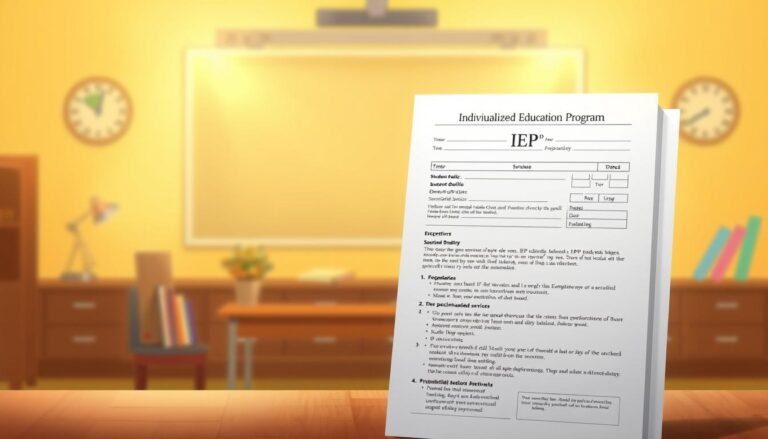Unlocking Potential: How Vocabulary Development Can Transform Learning for Students with Disabilities
Introduction
Imagine a classroom where every student, regardless of their abilities, feels empowered to express their thoughts, share their ideas, and achieve their dreams. This vision can become a reality through the strategic development of vocabulary. Unlocking potential: How vocabulary development can transform learning for students with disabilities is not just a catchy tagline—it’s a movement that can change lives. As we delve into the nuances of language acquisition and its profound effect on learning, we will unveil the critical role vocabulary plays in enhancing cognitive skills, fostering independence, and expanding educational opportunities for students with disabilities.
The Importance of Vocabulary Development
A Foundation for Learning
Vocabulary serves as the bedrock of literacy. Research highlights that a strong vocabulary facilitates better comprehension, communication, and critical thinking skills. For students with disabilities, who often face unique challenges in accessing the curriculum, elevating vocabulary can significantly improve academic performance.
The Connection Between Vocabulary and Comprehension
To truly comprehend written and spoken language, one needs a solid vocabulary foundation. According to a study by Biemiller and Boote (2006), students can make remarkable gains in reading comprehension by expanding their vocabulary. This is particularly crucial for students with disabilities who may struggle to decode or understand the material due to limited word knowledge.
The Role of Educators in Vocabulary Development
Tailored Strategies for Diverse Learning Needs
Unlocking potential: How vocabulary development can transform learning for students with disabilities relies heavily on the strategies educators employ. Tailoring vocabulary instruction to meet diverse learning needs enhances engagement and retention. Some effective strategies include:
- Explicit Instruction: Teach specific vocabulary words along with their meanings, usage, and contexts.
- Multisensory Approaches: Encourage the use of visual aids, auditory supports, and kinesthetic activities to bridge gaps in understanding.
- Contextual Learning: Introduce new words within meaningful contexts to help students grasp their meanings and applications.
Creating a Vocabulary-Rich Environment
Classroom environments should be rich in language. Teachers can integrate word walls, interest-based reading materials, and interactive discussions to foster language development. Regularly exposing students to new vocabulary in various contexts supports their overall growth.
Table 1: Effective Vocabulary Strategies
| Strategy | Description | Benefits |
|---|---|---|
| Explicit Instruction | Direct teaching of new vocabulary words | Improves understanding and memory |
| Multisensory Approaches | Engaging multiple senses in the learning process | Increases retention and engagement |
| Contextual Learning | Learning vocabulary in relation to relevant contexts | Enhances comprehension and application |
Case Studies: Real-World Applications
Case Study 1: Tara’s Transformation
Tara, a fifth-grade student with a learning disability, exhibited difficulties in reading comprehension. Her teacher, recognizing the power of vocabulary development, implemented an explicit instruction program focused on high-frequency words. Over the academic year, Tara’s reading level improved significantly, and she could participate more actively in class discussions. This exemplifies unlocking potential: how vocabulary development can transform learning for students with disabilities.
Analysis: Tara’s case underscores the importance of targeted instruction in vocabulary acquisition. Through consistent practice and application, students with disabilities can enhance their reading skills and overall academic achievement.
Case Study 2: The Visual Vocabulary Project
A high school in California piloted the Visual Vocabulary Project, a program designed for students with autism spectrum disorder (ASD). The initiative incorporated visual supports, such as picture cards, to accompany new vocabulary words. As a result, students showed 40% improvement in their ability to express themselves both orally and in written form.
Analysis: This project illustrates how adapted vocabulary learning strategies can support students with disabilities, showcasing the potential for growth when language development methods align with student needs.
The Role of Technology in Vocabulary Development
Digital Tools and Resources
In today’s digital age, technology plays an influential role in vocabulary development. Numerous apps and online platforms offer interactive ways for students with disabilities to learn new words. Tools like vocabulary games, digital flashcards, and audiobooks can make vocabulary acquisition engaging and accessible.
Table 2: Tech Tools for Vocabulary Development
| Tool | Description | Accessibility Features |
|---|---|---|
| Vocabulary.com | Online vocabulary learning platform | Visual and audio support |
| Quizlet | Digital flashcards and games | Customizable learning experiences |
| Reading Rockets | Educational website with resources | Text-to-speech options |
Case Study 3: Jack’s Journey with Apps
Jack, a seventh-grade student with dyslexia, struggled with reading. His teacher introduced him to a suite of vocabulary apps that featured engaging game formats. Through regular use, Jack expanded his vocabulary significantly, leading to improved reading comprehension and increased confidence.
Analysis: Jack’s experience highlights technology’s transformative potential in vocabulary development. By tapping into students’ interests through digital means, educators can create effective learning experiences that resonate.
Building Vocabulary Beyond the Classroom
Parental Involvement
Unlocking potential: How vocabulary development can transform learning for students with disabilities extends beyond the classroom walls. Parents play a crucial role in reinforcing vocabulary at home. Strategies for parental involvement include reading together, playing word games, and encouraging discussions about vocabulary encountered in everyday life.
Community Engagement
Community programs can also bolster vocabulary development among students with disabilities. Libraries, after-school programs, and workshops that focus on literacy and language skills can provide additional support, fostering a collaborative approach to vocabulary development.
Conclusion
Unlocking potential: How vocabulary development can transform learning for students with disabilities is not merely about teaching words—it’s about creating pathways to understanding, expression, and success. When educators, parents, and communities come together, they enable students to break through barriers and reach their fullest potential.
As we move forward, it is essential to continue investing in vocabulary development strategies and creating inclusive learning environments that celebrate diversity in language. The transformation is not only achievable but also necessary for a brighter future for all students.
FAQs
1. Why is vocabulary development essential for students with disabilities?
Vocabulary development is key to improving comprehension, communication, and critical thinking skills. A robust vocabulary helps students with disabilities better access the curriculum, enabling them to engage more fully in their learning.
2. What are some effective vocabulary development strategies?
Effective strategies include explicit instruction of vocabulary, multisensory learning approaches, and contextual learning where students learn words in meaningful situations.
3. How can technology assist in vocabulary development?
Digital tools like educational apps and online resources can provide interactive and engaging ways for students to learn new vocabulary, catering to various learning styles and needs.
4. How can parents support vocabulary development at home?
Parents can support vocabulary acquisition by reading together, engaging in conversations about new words, and playing educational games that reinforce language skills.
5. What role do educators play in promoting vocabulary growth?
Educators can create vocabulary-rich environments, implement tailored vocabulary instruction, and leverage technology to support all students, especially those with disabilities, in their language development journeys.
Through dedicated efforts in vocabulary development, we can indeed unlock potential and transform learning for students with disabilities, paving the way for a more inclusive and successful educational experience for all.
















